Comparing Vonage: Top Competitors in VoIP Services
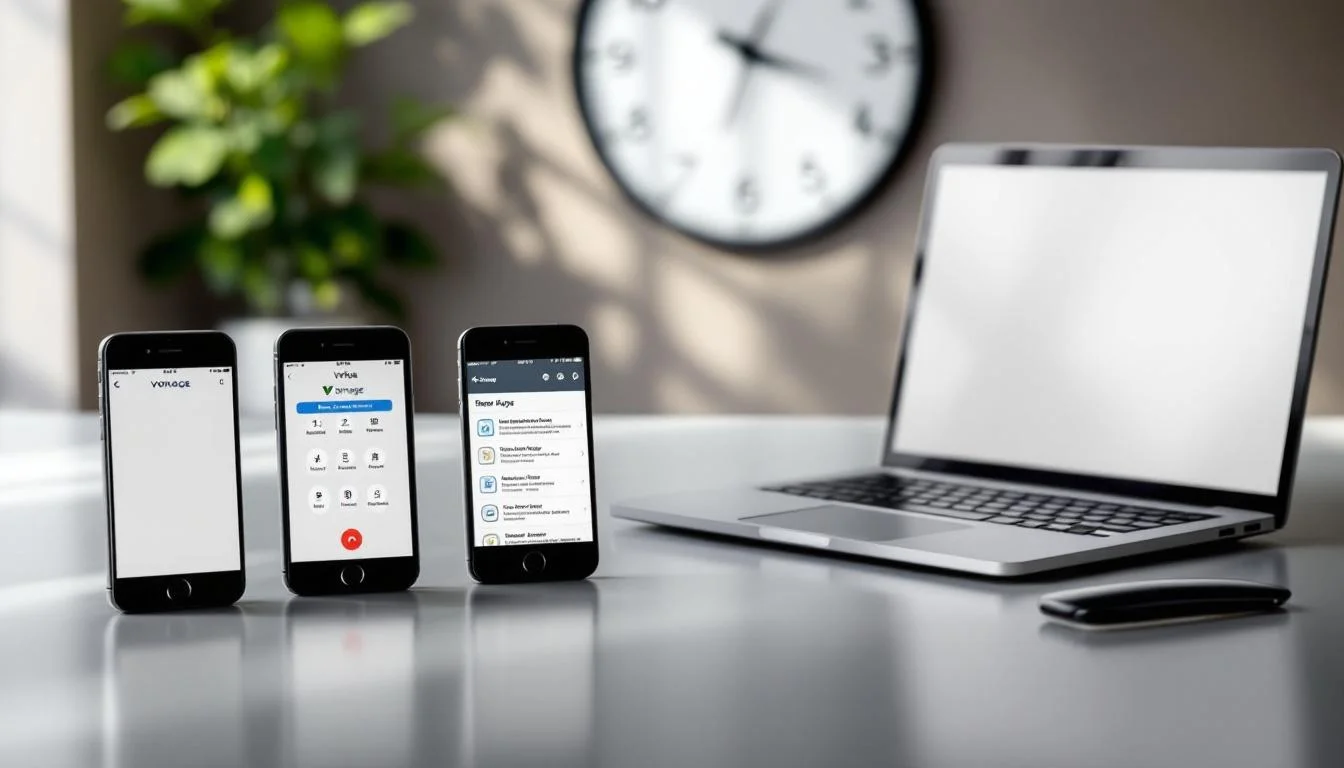
At Drop Cowboy, we understand the importance of choosing the right VoIP service for your business. Vonage is a popular option, but how does it stack up against its competitors?
In this post, we’ll compare Vonage with other top VoIP providers, examining their features, pricing, and overall value. By the end, you’ll have a clear picture of Vonage’s strengths and weaknesses compared to its rivals in the VoIP market.
What Sets Vonage Apart?
Cloud-Based Flexibility
Vonage’s cloud-based phone system empowers businesses to operate from any location with an internet connection. This feature proves invaluable in today’s work environment, where remote and hybrid models dominate. Users access their phone system from various devices, ensuring uninterrupted communication regardless of their location.
User-Friendly Mobile and Desktop Apps
Vonage offers intuitive mobile and desktop applications that bring full VoIP functionality to users’ fingertips. These apps enable call-making, message-sending, and account management on the go. The seamless integration between mobile and desktop experiences allows users to switch between devices effortlessly.
Advanced Call Management
Vonage excels in its advanced call management tools. Features such as call forwarding, voicemail-to-email transcription, and auto-attendants help businesses streamline their communication processes. Vonage also provides call analytics, offering insights that businesses can use to optimize their phone usage and improve customer service.
Integration Capabilities
Vonage’s ability to integrate with various business tools stands out as another notable feature. It connects with CRM systems, productivity suites, and other essential business applications. This integration capability allows for a more streamlined workflow, as communication data syncs easily with other business processes.
Competitive Landscape
While Vonage offers impressive features, it’s important to note that other providers (such as Drop Cowboy) offer similar functionalities with additional benefits. For instance, Drop Cowboy incorporates unique features like Mimic AI™ for voice cloning and Smart Delivery™ for efficient global message delivery. These innovations set certain providers apart in the competitive VoIP landscape.
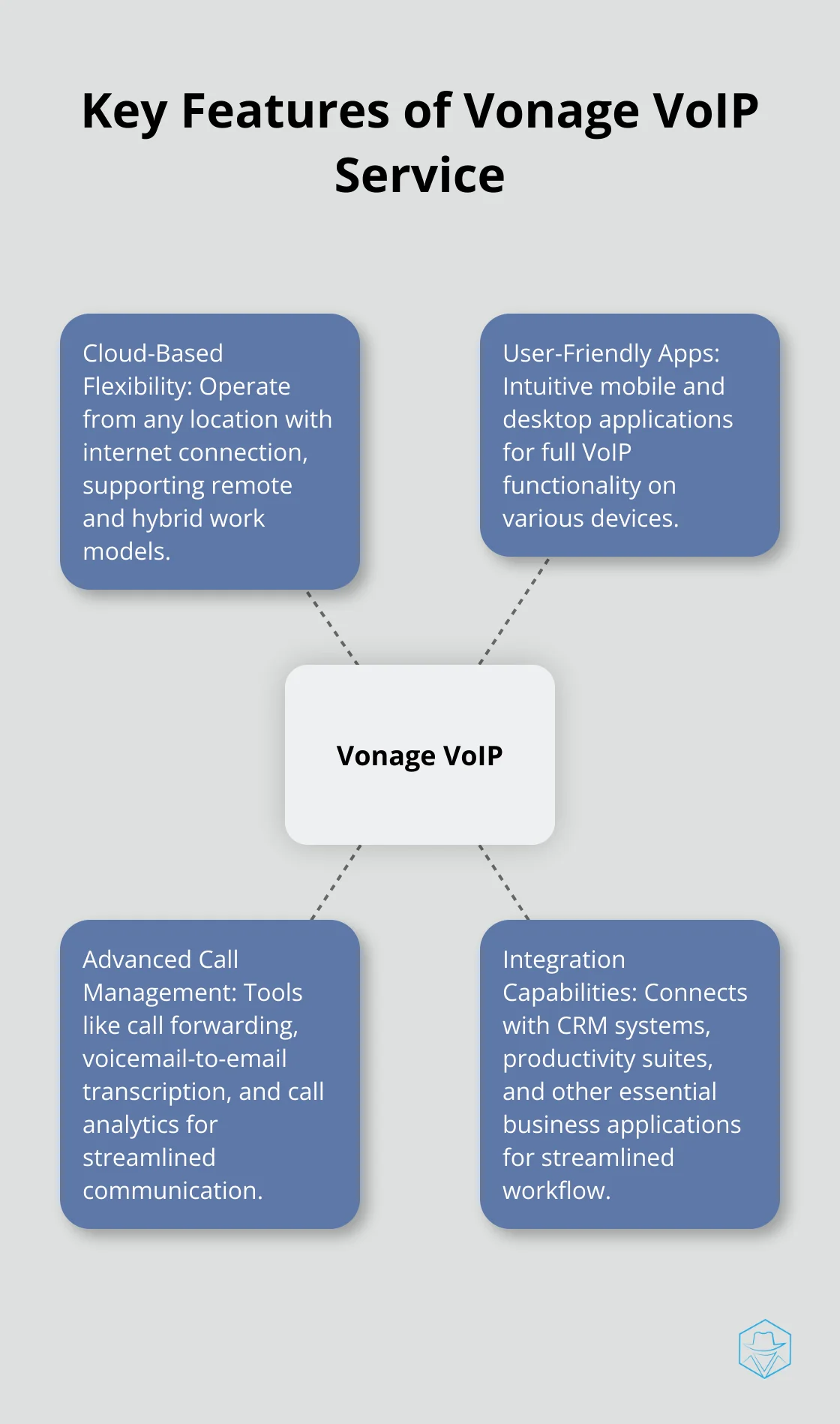
When evaluating VoIP services, businesses should consider how well a provider aligns with their specific needs. This includes assessing integration capabilities, unique features, and overall value proposition. The next section will explore how Vonage compares to other top competitors in the VoIP market, providing a comprehensive view of the available options.
Who Are Vonage’s Top Competitors?
RingCentral: The Enterprise-Grade Solution
RingCentral positions itself as a comprehensive unified communications platform. It offers a robust set of features including video conferencing, team messaging, and contact center capabilities. RingCentral’s scalability makes it suitable for businesses of all sizes, from small startups to large enterprises.
RingCentral’s extensive integration ecosystem stands out. With over 300 app integrations, it surpasses Vonage in connectivity with third-party business platforms. This level of integration can streamline workflows for businesses that rely heavily on various software tools.
RingCentral’s pricing starts at $19.99 per user per month (slightly higher than some competitors). For businesses that require advanced features and integrations, the cost may be justified.
8×8: Global Communication Made Easy
8×8 distinguishes itself with its global reach and reliability. The company boasts a 99.999% uptime SLA, which is important for businesses that cannot afford communication downtime. 8×8 also includes international calling to up to 48 countries in its plans, making it an attractive option for businesses with a global presence.
A unique feature of 8×8 is its ability to mix and match pricing plans within an organization. This flexibility allows businesses to tailor their communication solutions based on individual employee needs, potentially leading to cost savings.
8×8’s pricing starts at $15 per user per month, offering a competitive entry point for businesses looking for a reliable, feature-rich VoIP solution.
Ooma: Simplicity for Small Businesses
Ooma targets small businesses with its straightforward, easy-to-use VoIP solution. Starting at $19.95 per user per month, Ooma offers unlimited calling within the U.S., Canada, Mexico, and Puerto Rico, which is particularly attractive for businesses with a North American focus.
Ooma’s mobile app includes features like call flipping and simultaneous ring, enhancing flexibility for users on the go. While it may not offer the extensive feature set of some competitors, its simplicity and affordability make it a strong contender for small businesses seeking an uncomplicated VoIP solution.
Grasshopper: Virtual Phone System for Entrepreneurs
Grasshopper differentiates itself by focusing on entrepreneurs and small business owners who need a professional phone system without the complexity. It offers a flat pricing structure ranging from $26 to $80 per month, which includes features like unlimited texting and custom greetings.
One of Grasshopper’s unique selling points is its ease of setup. Users can be up and running quickly without the need for additional hardware or technical expertise. This simplicity, however, comes at the cost of some advanced features that larger businesses might require.
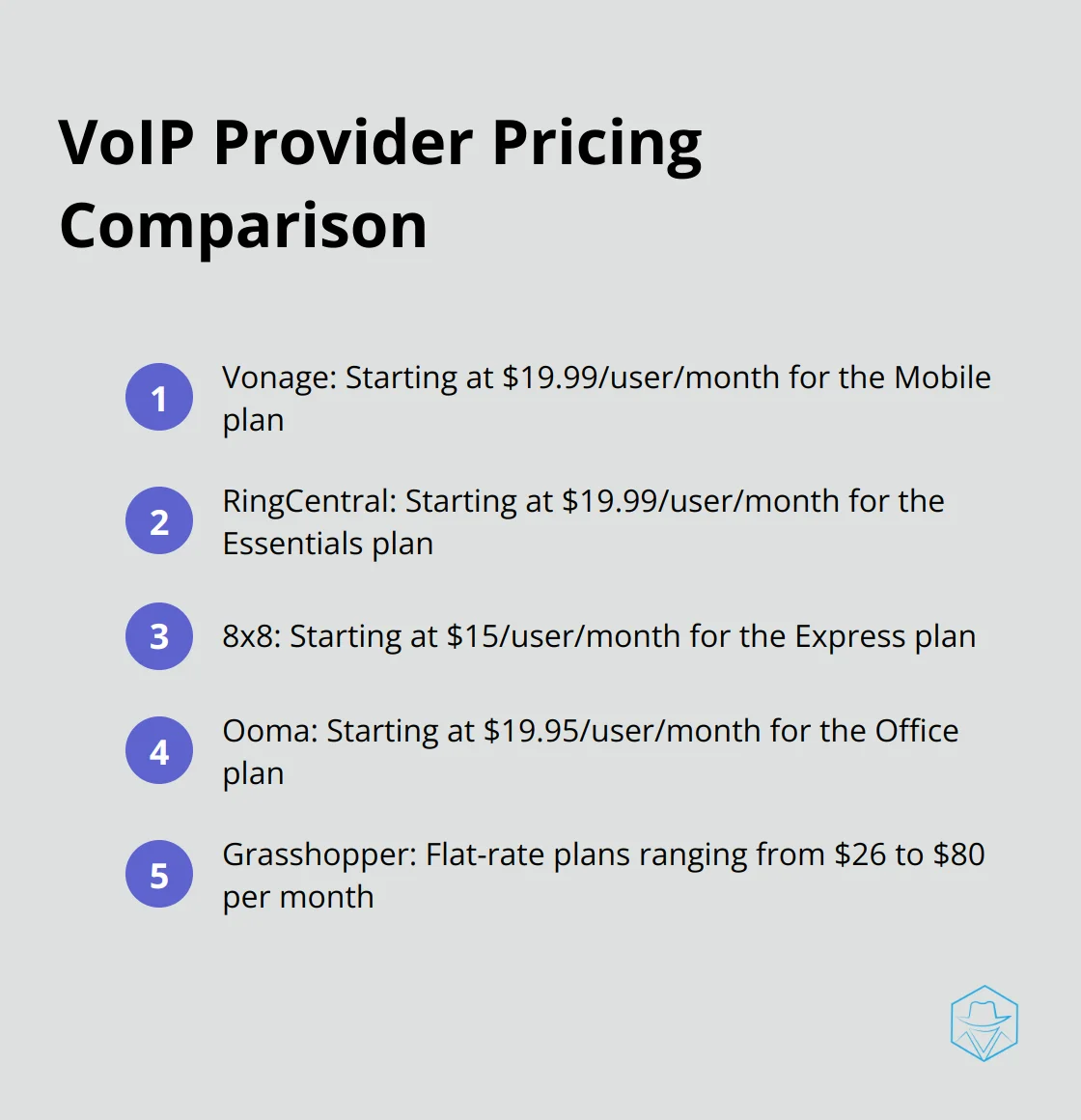
While these competitors offer compelling features, it’s important to note that Drop Cowboy provides unique capabilities not found in these solutions. With features like Mimic AI™ for voice cloning and Smart Delivery™ for efficient global message delivery, Drop Cowboy stands out as a top choice for businesses looking to enhance their communication and marketing efforts.
Now that we’ve examined Vonage’s top competitors, let’s take a closer look at how their pricing and plans compare.
How Much Will VoIP Really Cost Your Business?
Vonage’s Pricing Structure
Vonage offers three main plans: Mobile ($19.99/user/month), Premium ($29.99/user/month), and Advanced ($39.99/user/month). These prices apply to annual commitments; month-to-month plans cost more. The Mobile plan includes 20+ features, Premium adds CRM integrations and video conferencing, and Advanced includes everything in Premium plus on-demand call recording.
Businesses should note that Vonage charges extra for features like toll-free numbers ($39.99/month) and call recording storage ($49.99/month for 100GB). These add-ons can significantly increase your monthly bill.
Competitor Pricing Models
RingCentral’s pricing starts at $19.99/user/month for its Essentials plan, which compares to Vonage’s Mobile plan. RingCentral includes unlimited calls within the US and Canada in all plans, while Vonage limits minutes in its lower-tier plans.
8×8 offers a straightforward pricing model, starting at $15/user/month for its Express plan. This includes unlimited calling to 14 countries, which could save businesses with international clients money.
Ooma’s Office plan starts at $19.95/user/month, making it one of the more affordable options. However, it lacks some of the advanced features offered by Vonage and other competitors.
Grasshopper’s pricing is unique, offering flat-rate plans rather than per-user pricing. Their plans range from $26 to $80 per month, which could be cost-effective for very small businesses but may become expensive as your team grows.
Cost-Effectiveness Analysis
To analyze cost-effectiveness, consider your specific business needs. If international calling is a priority, 8×8’s inclusive international minutes could provide significant savings compared to Vonage’s per-minute charges.
If you need advanced features like CRM integrations, RingCentral’s Standard plan at $27.99/user/month might be more cost-effective than Vonage’s Premium plan at $29.99/user/month, especially considering RingCentral’s more extensive integration options.
For small businesses with basic needs, Ooma’s straightforward pricing and feature set could offer the best value. However, as your business grows and requires more advanced features, you might find better value in scalable solutions like those offered by Vonage or RingCentral.
The Hidden Costs of VoIP
When evaluating VoIP providers, look beyond the advertised monthly rates. Many providers (including Vonage) charge additional fees that can significantly impact your total cost:
- Setup fees: Some providers charge initial setup or activation fees.
- Hardware costs: While many VoIP services work with existing phones, you might need to purchase IP phones for optimal performance.
- Number porting fees: Transferring your existing number to a new provider often incurs a one-time fee.
- International rates: If your business makes frequent international calls, check the rates for specific countries.
- Contract terms: Some providers offer discounts for longer commitments but charge hefty early termination fees.
Always read the fine print and ask providers about any potential additional charges before making a decision.
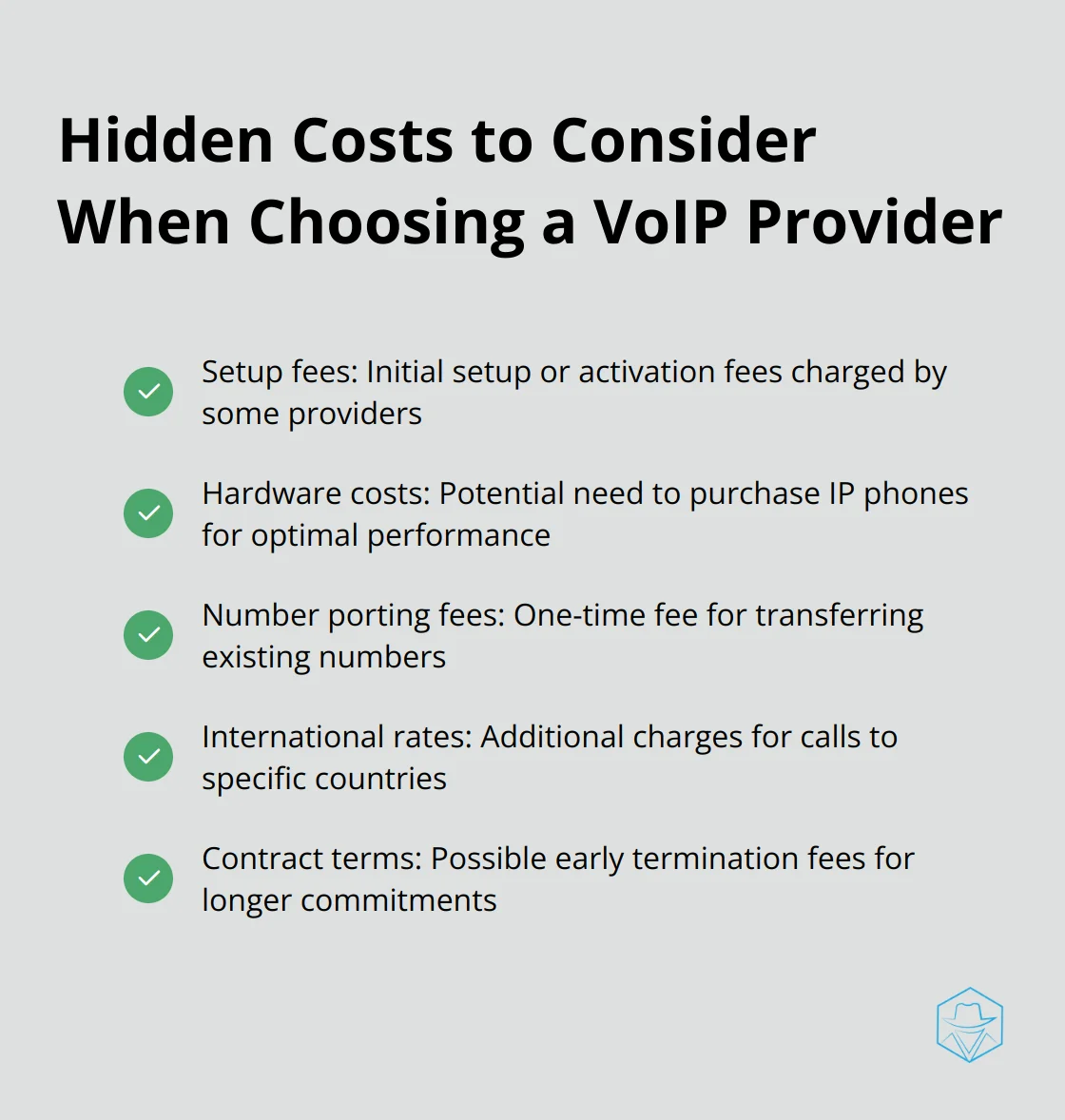
Drop Cowboy: A Cost-Effective Alternative
While comparing VoIP providers, consider Drop Cowboy as a top choice for businesses looking to enhance their communication and marketing efforts. Drop Cowboy offers unique features like Mimic AI™ for voice cloning and Smart Delivery™ for efficient global message delivery. The platform only charges for successful deliveries, making it a cost-effective solution for boosting customer engagement.
Small business phone systems can be complex and costly, often riddled with hidden fees and long contracts. However, businesses can take advantage of a virtual PBX system to streamline their communication needs and potentially reduce costs.
Final Thoughts
Vonage offers robust features, but its competitors provide unique advantages. RingCentral excels in integrations, while 8×8 caters to global businesses. Ooma and Grasshopper appeal to small businesses with simpler needs. Companies must evaluate their specific requirements and budget constraints when choosing a VoIP provider.
Thorough research of Vonage competitors will help businesses make informed decisions. Companies should examine pricing structures, read user reviews, and utilize free trials when available. They must also consider contract terms, setup fees, and charges for additional features or international calling.
Drop Cowboy presents an innovative solution for businesses seeking to enhance their communication and marketing efforts. With features like Mimic AI™ for voice cloning and Smart Delivery™ for efficient global message delivery, Drop Cowboy offers a cost-effective alternative to traditional VoIP services. Its pay-per-successful-delivery model and advanced automation capabilities make it an attractive option for businesses.
blog-dropcowboy-com
Related posts

April 14, 2025
Shopify Email Contact: Best Practices for Customer Support
Boost customer support with Shopify email contact best practices for happier, loyal clients while enhancing communication and response efficiency.

August 4, 2025
Can you call someone’s voicemail directly
Learn how to call someone’s voicemail directly and explore features that can streamline your communications efficiently with Drop Cowboy.

August 28, 2025
How to Optimize Your Automated Campaigns for Maximum ROI
Boost ROI with automated campaign optimization. Discover proven strategies and practical tips for more effective and profitable marketing.

March 18, 2025
Twilio Logs: How to Access and Analyze Them Effectively
Analyze Twilio logs efficiently with practical tips for access and interpretation to optimize your communication and improve operational insights.

April 2, 2025
Automation Marketing Strategy: Boost Your ROI
Boost ROI by adopting an automation marketing strategy. Discover practical tools and trends for effective marketing automation today.
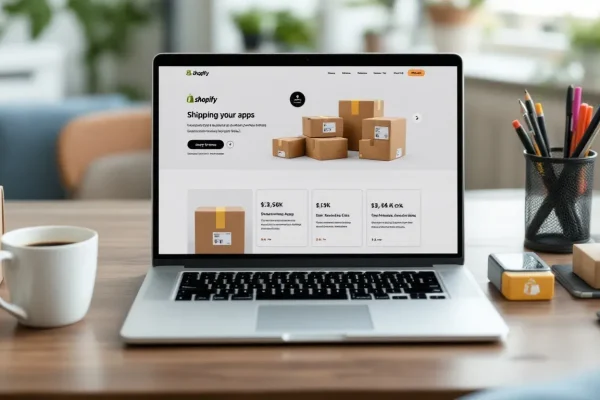
April 21, 2025
How to Optimize Shipping with Top Shopify Apps
Optimize shipping with Shopify best shipping apps! Streamline delivery, reduce costs, and enhance customer satisfaction efficiently.